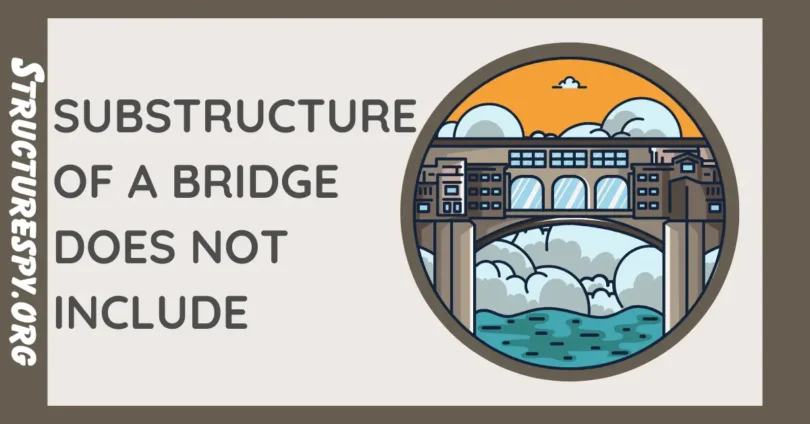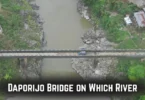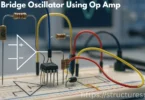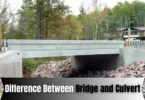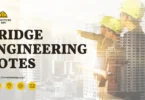Bridges are important structures that help people and vehicles cross rivers, valleys, and roads. To understand a bridge better, engineers divide it into two main parts: the superstructure and the substructure. The substructure is the lower part of a bridge that supports the weight and passes it safely to the ground.
But many learners often get confused about which parts belong here and which do not. The substructure of a bridge does not include the deck, girders, trusses, or cables, because these belong to the superstructure. Knowing this difference makes it easier to study bridges, design them correctly, and avoid mistakes in exams or construction projects.
What is the Substructure of a Bridge?
The substructure is the lower portion of a bridge that directly touches the earth. Its job is to safely carry the loads coming from the superstructure and transfer them into the soil or rocks beneath. Without a strong substructure, the entire bridge can collapse, no matter how well the roadway or deck is built.
- Superstructure = Upper part that carries traffic.
- Substructure = Lower part that supports the upper part.
The substructure stays hidden under the deck, but it plays a bigger role than most people realize.
Main Components of a Bridge Substructure
The substructure has several important parts. Each plays a unique role in supporting the superstructure and keeping the bridge stable:
1. Abutments
- These are located at both ends of the bridge.
- They support the ends of the bridge deck and also hold back the earth from the embankment.
2. Piers
- These vertical supports stand between abutments in long bridges.
- They carry the weight of the deck and transfer it downwards.
3. Foundations
- The base of the bridge that rests directly on the soil or rock.
- Types:
- Shallow Foundation (for strong soil near the surface)
- Deep Foundation (piles or caissons, for weak soil or deep water)
4. Bearings
- Special devices placed between the deck and the substructure.
- They allow small movements due to temperature changes or loads.
Together, these elements form the backbone of the bridge.
What the Substructure of a Bridge Does Not Include
Now let’s focus on the keyword: “Substructure of a bridge does not include” certain parts. Many people wrongly think that the road or cables are part of substructure, but this is incorrect.
- Deck or Roadway: The platform on which vehicles move.
- Girders and Beams: Horizontal elements supporting the deck.
- Trusses: Large triangular frameworks in steel bridges.
- Cables: Used in suspension or cable-stayed bridges.
- Parapets, Railings, and Barriers: Safety elements for vehicles and pedestrians.
- Expansion Joints: Allow bridge parts to expand and contract.
All of these belong to the superstructure, not the substructure.
Difference Between Substructure and Superstructure
It is very easy to confuse the two, so here’s a simple comparison:
| Feature | Substructure | Superstructure |
| Location | Below the deck, hidden | Above the deck, visible |
| Main Role | Supports loads and transfers them to ground | Carries vehicles, pedestrians, and loads |
| Includes | Abutments, piers, foundations, bearings | Deck, girders, beams, trusses, cables, railings |
| Example | Piers under a bridge | Roadway you drive on |
If you can see it while driving on the bridge, it’s part of the superstructure. If it’s under the road and hidden, it’s part of the substructure.
Importance of Identifying What is Not Included
Why is it so important to know what the substructure of a bridge does not include?
- For Students: It helps avoid confusion in exams and assignments.
- For Engineers: It ensures correct design and cost estimation.
- For Safety: Wrong identification can lead to weak designs and accidents.
- For General People: It makes understanding bridge safety easier.
Real-Life Examples of Bridge Substructures
Imagine a highway bridge over a river:
- The piers stand tall in the water, transferring the load.
- The abutments stand at both ends.
- The foundations lie deep in the soil.
Now, think about what you see when you drive: the deck, railing, and barriers. These are part of the superstructure, not the substructure.
Common Misconceptions About Substructure
People often misunderstand the term “substructure.” Here are some common mistakes:
- Thinking that the deck or road is part of substructure.
- Believing that cables or trusses belong to substructure.
- Counting railings and parapets as substructure.
- Mixing up bearings (some are part of substructure, some are not).
These misconceptions can confuse students, so always remember the correct difference.
Common FAQs About Substructure of A Bridge Does Not Include
Some faqs of Substructure of A Bridge Does Not Include:
What is the substructure of a bridge?
The substructure is the lower portion of a bridge that supports the superstructure and transfers loads to the ground.
What does the substructure of a bridge include?
It includes abutments, piers, foundations, and sometimes bearings.
What does the substructure of a bridge not include?
It does not include the deck, girders, beams, cables, trusses, or railings.
Is the deck part of substructure?
No, the deck belongs to the superstructure.
Are piers part of substructure?
Yes, piers are a main component of the substructure.
Conclusion
The substructure of a bridge is the lower, hidden part that supports the superstructure and transfers loads to the ground. It includes abutments, piers, and foundations. However, the substructure of a bridge does not include the deck, girders, beams, cables, or railings, because these belong to the superstructure.
By learning this difference, you can better understand bridges, whether you are a student, an engineer, or simply a curious reader. Always remember: superstructure carries the traffic, substructure carries the bridge.

